Vercelli to Pavia by train. Pavia walk, 19.09km
By way of a 1.5 hr train trip to Pavia, we avoided four days of walking alongside the flat Vercelli rice fields, now levelled and flooded again with water for planting during May. The rice seeds will be sown in the water, using specially-equipped amphibious tractors.
After locating our apartment, we spent some time over gelatos planning the days ahead. We realize now that our original plan to primarily walk the VF route is not always practical (stages are long and often challenging) or desirable (ie, flat farmland), and often conflict with our equal desire to experience the culture of the cities. We needed a plan to allow for both. Lois downloaded the Cicerone guide for another viewpoint and, as it turned out, better maps. We agreed that, if possible, we would both like to walk the stages of the route in the Apennines and also in Tuscany. After that, we would see. For the Apennine Mountains, we decided to book a tour that would look after luggage transfer and also provide backup, if a stage is found to be too long or strenuous.
In the meantime, we set off to explore Pavia. We walked to the Ponte Coperto, a reconstruction of an ancient bridge across the river Ticino. The Ticino originates in the Alps, flows through the Swiss canton of Ticino and into the Po river near Pavua. The stone and brick arch bridge , including a chapel, was modelled on its medieval predecessor (itself a replacement for a Roman construction, parts of which are still visible on the river floor) which had partially collapsed following Allied bombing in 1945. While the bridge looked old, the knowledge that it dated from 1951 was a bit disappointing, although the desire to replace a beloved bridge in the same style after the devastation of WWII is understandable.
On Wednesday morning, the temperature had dropped to 12C and it was pouring, making Lois question her decision (when it was 26C) to send back her long hiking pants, warm jacket and rain pants! She also second-guessed her decision to wash out her capris (only remaining hiking wear), as they had not dried overnight. Fortunately, Paul came to the rescue, suggesting she use the hair dryer, which worked a treat! Wanting to walk today, we were debating between walking ahead on the route and returning by train to Pavia or walking around the city and beyond to view the sights. We chose the latter.
After a visit to the very helpful tourist office, we headed first to view the Cathedral (Duomo di Pavia). From the outside, the unusual building principally made of red brick almost looks ruined, but inside reveals a massive , somewhat overwhelmingly opulent Renaissance-style church, one of the largest buildings in central northern Italy. Built in the 15thC to replace two existing “twin” Romanesque cathedrals, the Duomo is made in the form of a Greek Cross, with three naves flanked by semi-circular chapels. Leonardo da Vinci is said to have worked on its foundations.
Next, we walked over to the University of Pavia, passing by three medieval brick towers, the only ones still standing of a hundred or more of these structures built to reflect the stature and power of prominent families. The University, opened in 1361, is one of the oldest in Europe. On our wander through, we went into the lecture theatre where Alessandro Volta presented the newly invented electrical battery to Napoleon. Our visit to the lovely Romanesque Church of San Michele nearby was memorable for the delightful man who showed us the important sights inside: a partially preserved floor mosaic from the 1100’s in the form of a labyrinth, with panels above representing the months of the year and the activities in the community associated with each month, and an unusual gold laminated silver crucifix from the 10thC, depicting a peaceful Jesus, with no wounds, his arms outstretched in welcome.
After lunch in a small, smart Vietnamese restaurant, we went to visit the 14thC Visconti Castle, but, as it didn’t reopen until 2:00, we carried on walking north out of the city towards Certosa, an 8 km walk along the Naviglio Pavese Canal. The canal and its locks, two of which we passed (non-working), were part of a plan of Leonardo Da Vinci to link Switzerland, Milan, Venice and the Adriatic.
The canal led us close to the 15thC Certosa di Pavia, a monastery and complex built in 1396-1495, by the Visconti family of Milan. The church was to serve as a mausoleum for the family. The location was strategically chosen midway between Milan and Pavia, the second city of the Duchy, where the Duke held his court, at the end of a large hunting park, which connected the Certosa to the castle of Pavia.
According to Wikipedia, “Certosa is the Italian equivalent of Charterhouse: a monastery of the cloistered monastic order of Carthusians founded by St. Bruno in 1044 at Grande Chartreuse. Though the Carthusians in their early centuries were known for their seclusion and asceticism and the plainness of their architecture, the Certosa is renowned for the exuberance of its architecture, in both the Gothic and Renaissance styles, and for its collection of artworks which are particularly representative of the region”.
As parts of the complex could only be seen on a guided tour by one of the monks in Italian, we had a look in the church and peeked into the cloisters, then walked around the high walls of the perimeter to the train station in Certosa to get a train back to the city. Finally, we visited the Church of San Pietro in Ciel d’Oro. As we had become acquainted with the life of Saint Augustine in Canterbury, we thought that we might see his tomb here. Dating from 1402, it is described as a “splendid monumental marble ark”. A plaque outside bears a passage from Dante’s Divine Comedy, recognizing the Church as the burial place also of the philosopher Severinus Boethius.

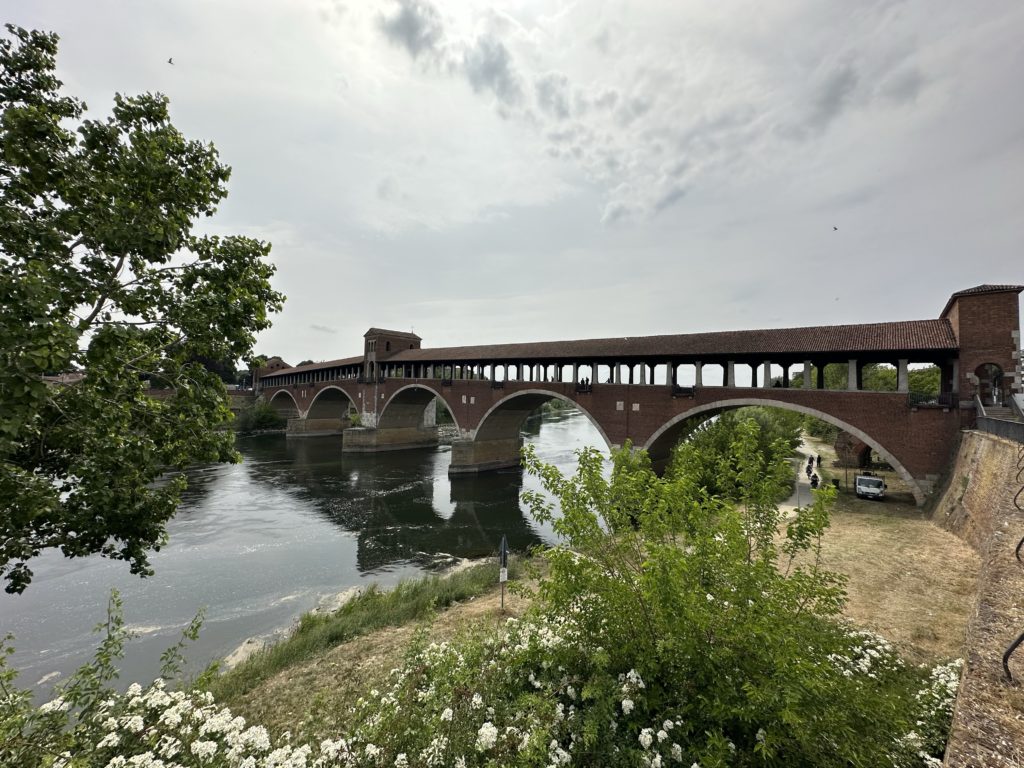


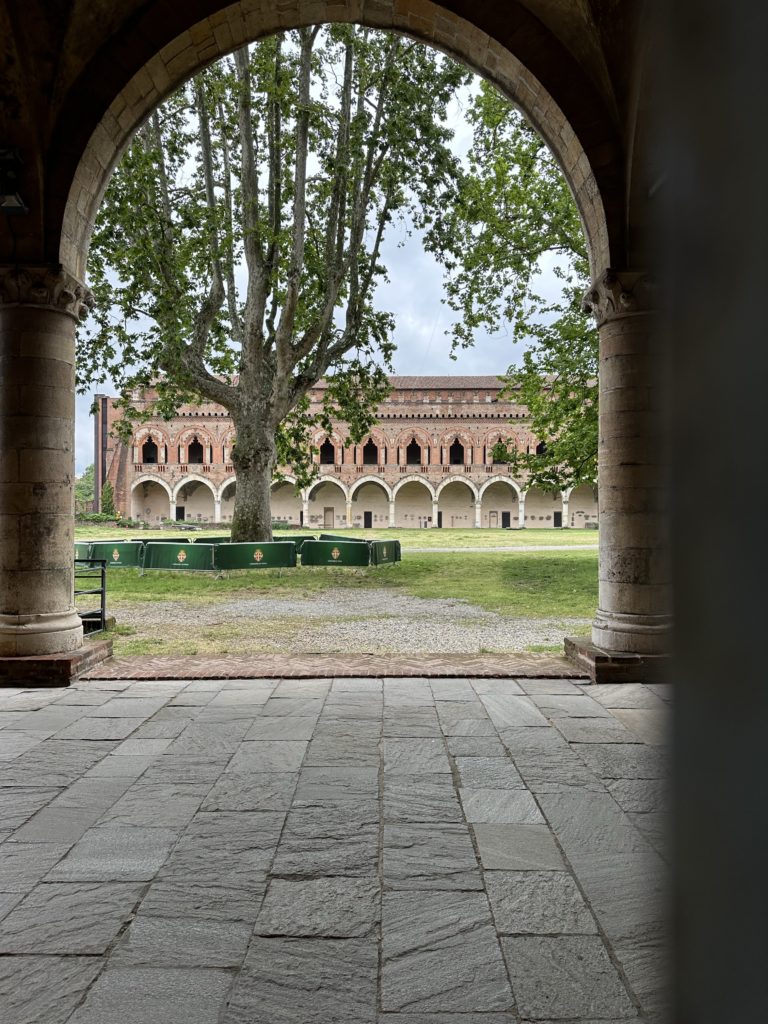







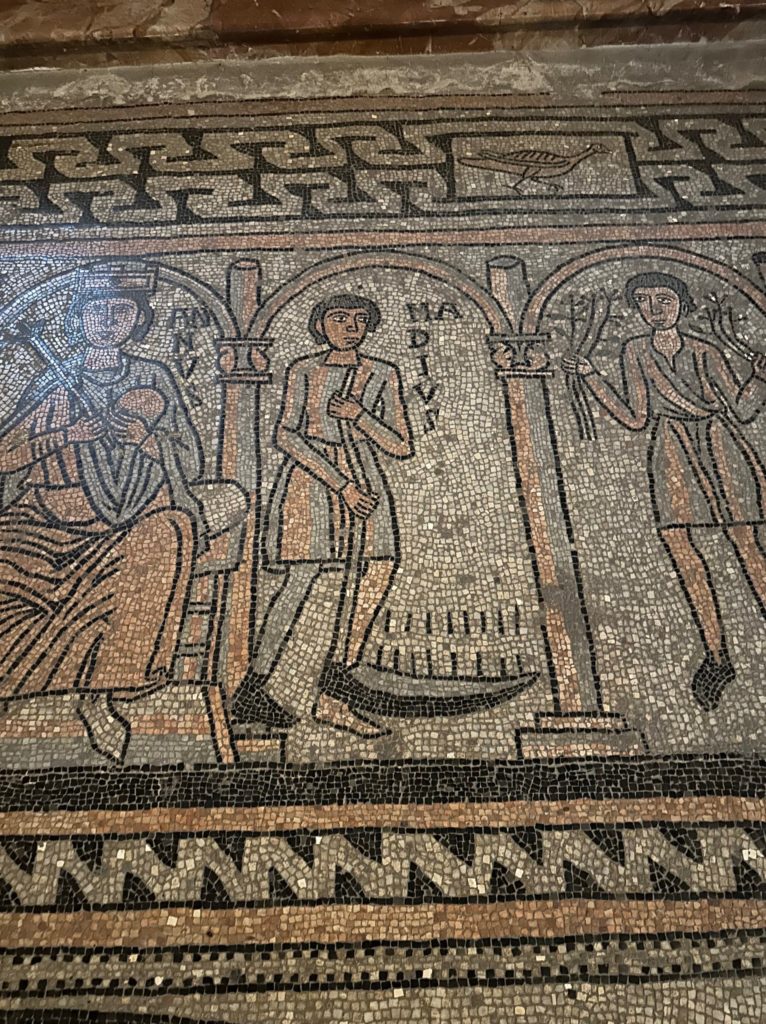


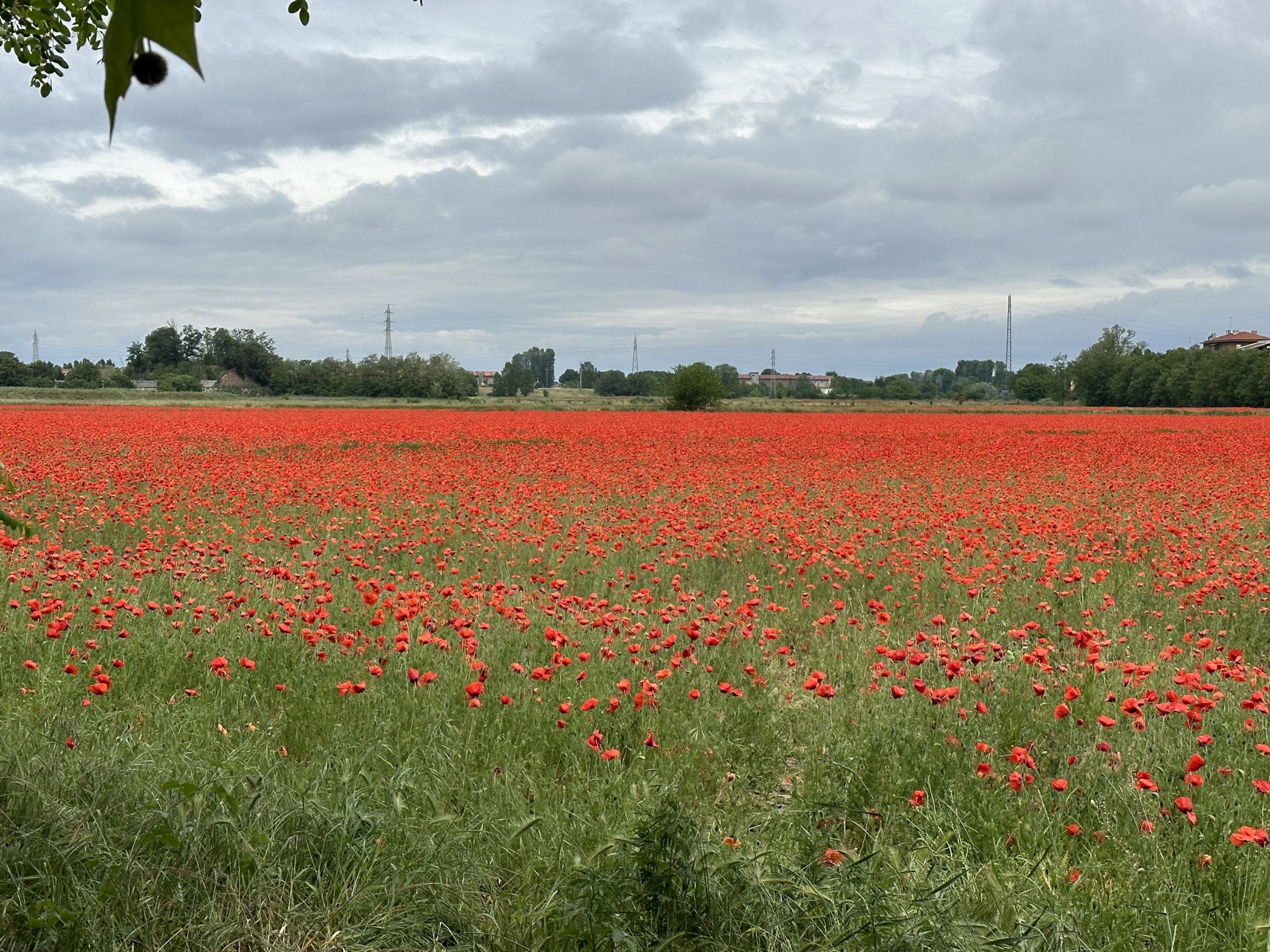



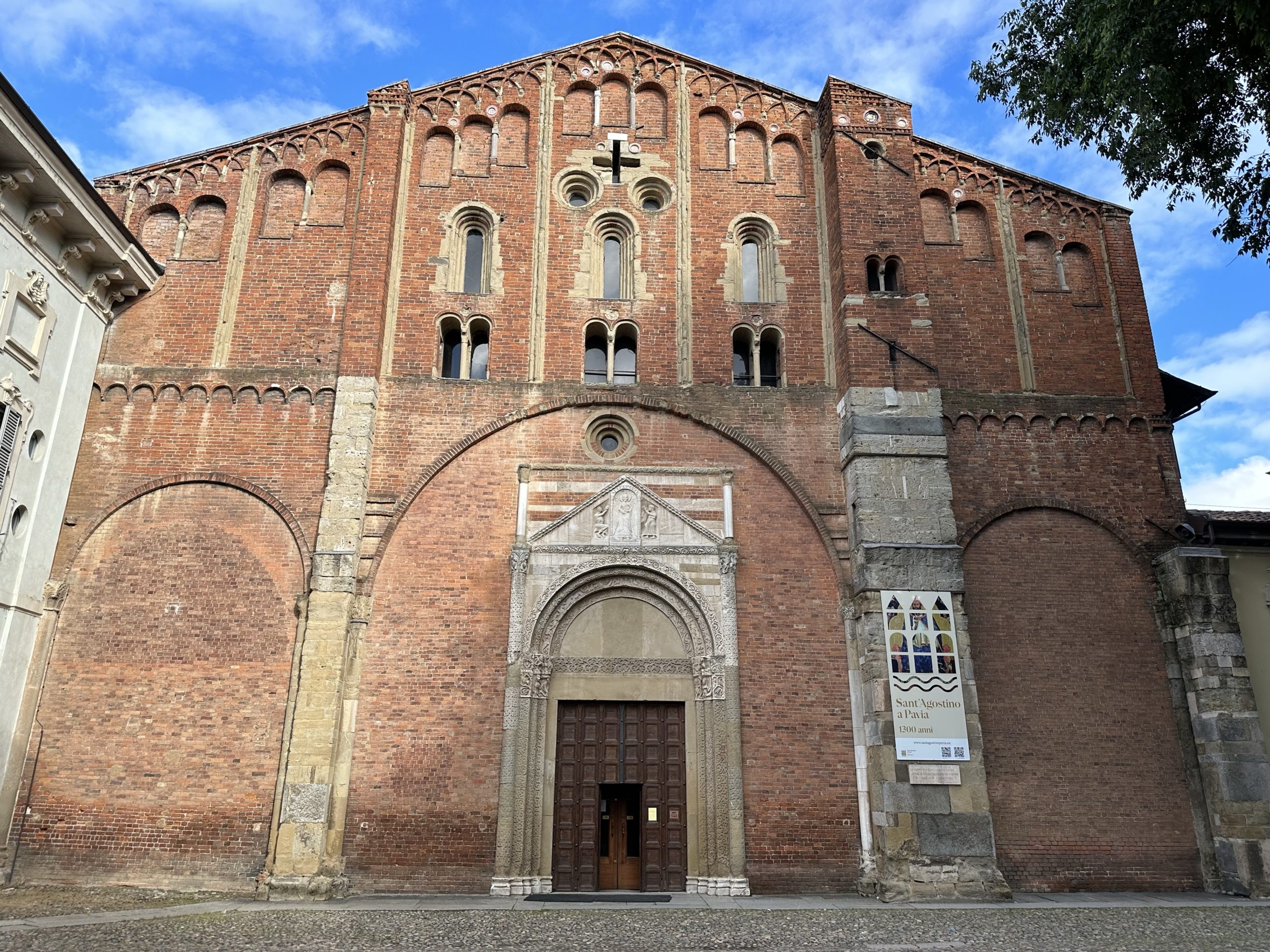
You’re doing really well, it looks like an amazing experience. Glad the accommodation and food sounds pretty good.
Keep up the good work and walking and hope the blisters are improving.
Liz,
Thanks for the encouragement!
Those blisters have resolved but got another one today, but have got lots of bandages !